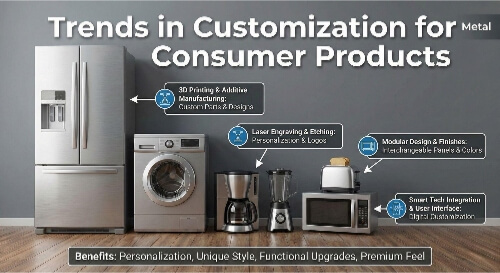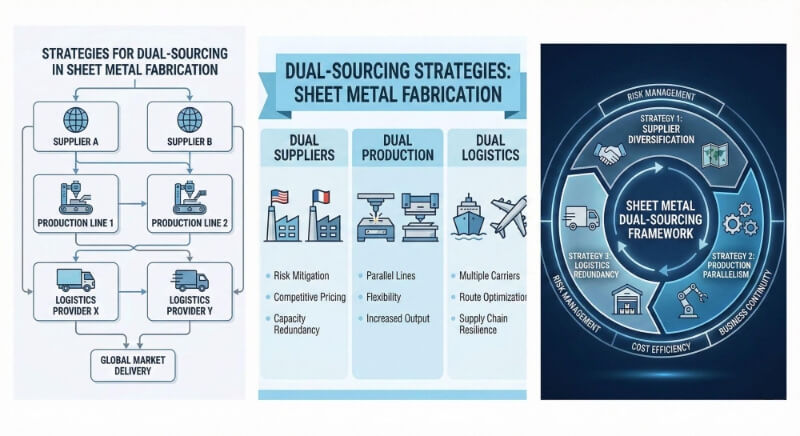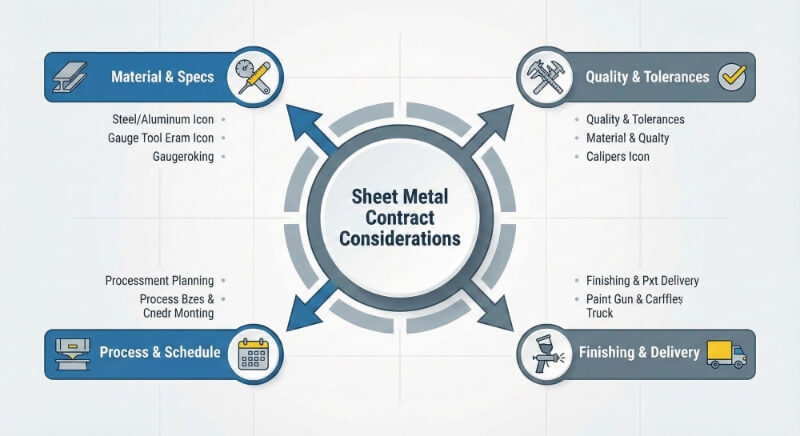Los ingenieros de fabricación a menudo necesitan ayuda para seleccionar el grado de acero para sus componentes mecánicos. El acero ASTM A108 ofrece ventajas específicas que lo hacen ideal para numerosas aplicaciones. Este tipo de acero con un contenido medio de carbono ofrece una excelente maquinabilidad, calidad constante y rentabilidad en diversos procesos de fabricación.
ASTM A108 es una especificación de acero al carbono medio. Combina resistencia con una excelente maquinabilidad, lo que lo hace perfecto para piezas de automoción, componentes de maquinaria y equipos de precisión. La norma incluye varios grados, de 1010 a 1095, cada uno de ellos con un contenido de carbono y unas propiedades mecánicas diferentes.
¿Por qué el acero ASTM A108 es perfecto para su próximo proyecto de fabricación? Examinemos en detalle sus propiedades, aplicaciones y características de mecanizado.
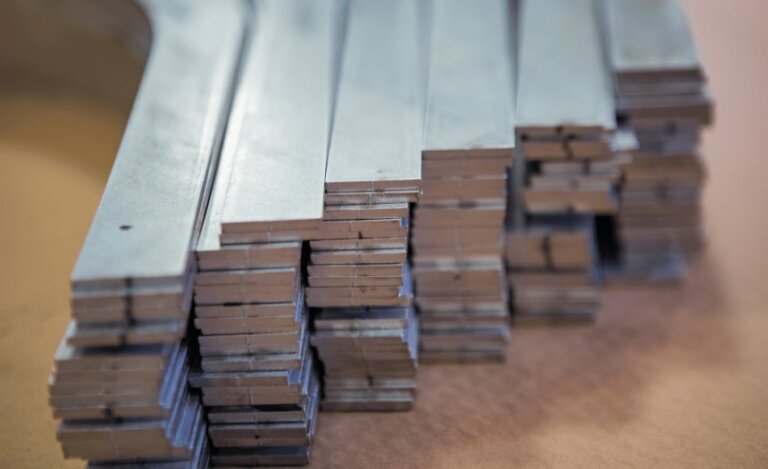
¿Qué es el acero ASTM A108?
ASTM A108 es una especificación estándar que cubre los materiales de acero al carbono acabados en frío y en caliente. La especificación incluye varios grados, identificados por un sistema numérico de cuatro dígitos que va de 1010 a 1095. Cada número de grado indica su contenido de carbono; por ejemplo, 1045 contiene aproximadamente 0,45% de carbono.
Composición y propiedades del acero ASTM A108
Los procesos de fabricación exigen materiales con propiedades constantes y fiables. El acero ASTM A108 cumple estos requisitos mediante una composición y un procesamiento cuidadosamente controlados. Cada grado ofrece características de rendimiento específicas adaptadas a diferentes aplicaciones.
Composición química del acero ASTM A108
La composición química define el comportamiento de este acero en aplicaciones de fabricación y uso final. La norma ASTM A108 incluye varios grados con distintos niveles de carbono, cada uno de ellos formulado con precisión para necesidades de fabricación específicas.
Elementos químicos clave:
- Carbono: 0,10% a 0,95% (varía según el grado)
- Manganeso: 0,30% a 1,00%
- Fósforo: 0,040% máx
- Azufre: 0,050% máx
- Silicio: 0,15% a 0,35%
Propiedades físicas del acero ASTM A108
Las propiedades físicas afectan al comportamiento del material durante los procesos de fabricación. Estas características se mantienen constantes en todas las series de producción, lo que ayuda a mantener el control de calidad.
Propiedades físicas típicas:
- Densidad: 7,85 g/cm³
- Conductividad térmica: 54 W/m-K
- Resistividad eléctrica: 1,43 x 10^-7 Ω-m
- Capacidad calorífica específica: 486 J/kg-K
Propiedades mecánicas: Resistencia, dureza y ductilidad
Las propiedades mecánicas determinan la capacidad de carga y el comportamiento en el mecanizado. Estos valores varían en función del grado específico y de la condición de tratamiento térmico.
Rangos comunes:
- Resistencia a la tracción: 380-900 MPa
- Fuerza de producción: 205-700 MPa
- Alargamiento: 10-28%
- Dureza: 85-269 BHN
Impacto de los elementos de aleación en el rendimiento del acero ASTM A108
Los distintos elementos de aleación potencian atributos específicos del acero. Cada componente desempeña un papel distinto en la consecución de las características de rendimiento deseadas.
Efectos de los principales elementos de aleación:
- Carbono: Controla la dureza y la resistencia
- Manganeso: Mejora la templabilidad
- Silicio: Aumenta la desoxidación y la resistencia
- Azufre: Mejora la maquinabilidad
- Fósforo: Añade solidez y resistencia a la corrosión
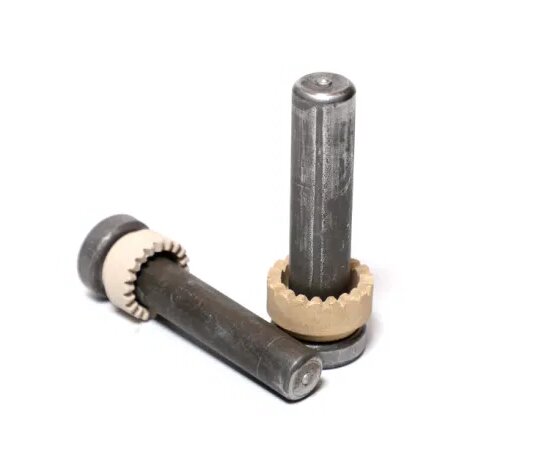
Fabricación y producción de acero ASTM A108
El proceso de fabricación influye directamente en las propiedades finales del acero A108. Tres métodos esenciales dan forma a las características de este material: estirado en frío, laminado en caliente y tratamiento térmico. Cada paso requiere un control preciso para cumplir las especificaciones ASTM.
Resumen del proceso: Estirado en frío frente a laminado en caliente ASTM A108
El estirado en frío parte de barras laminadas en caliente que se introducen en matrices a temperatura ambiente. Este proceso reduce el diámetro, mejora el acabado superficial y aumenta la resistencia. El resultado son tolerancias más estrechas y una mejor maquinabilidad.
El laminado en caliente se produce por encima de la temperatura de recristalización, normalmente alrededor de 1700°F. Este método da forma a secciones más grandes y crea una estructura de grano más uniforme. Aunque el acabado superficial es más rugoso que el del estirado en frío, el A108 laminado en caliente ofrece una buena conformabilidad.
Procesado y conformado del acero ASTM A108
La preparación de la materia prima comienza con un cuidadoso control químico. Las acerías procesan el acero siguiendo estos pasos:
- Fusión y refinado para lograr la composición deseada
- Conformación inicial en palanquillas o barras
- Acondicionamiento de la superficie para eliminar la cal
- Reducción de tamaño mediante estirado o laminado
- Alisado y alivio del estrés
El papel del tratamiento térmico en la mejora de las propiedades
El tratamiento térmico transforma la microestructura del A108. El proceso incluye:
- Normalizado a 1600-1700°F para refinar la estructura del grano.
- Recocido para mejorar la maquinabilidad
- Aliviar el estrés tras el trabajo en frío
- Opciones de templado y revenido para una mayor resistencia
Calidades de acero ASTM A108
Las calidades de acero de la norma A108 ofrecen diferentes opciones para necesidades de fabricación específicas. Cada grado equilibra las propiedades mecánicas, la maquinabilidad y los factores de coste para adaptarse a los requisitos de la aplicación.
Grados estándar y sus aplicaciones
Grado 1018: El grado más común, ofrece buen mecanizado y soldadura
- Carbono: 0.15-0.20%
- Lo mejor para piezas de uso general
- Se utiliza en ejes, pasadores y espaciadores
Grado 1045: Opción de mayor resistencia
- Carbono: 0.43-0.50%
- Se adapta a las piezas de transmisión de potencia
- Común en componentes de maquinaria
Grado 12L14: Maquinabilidad superior
- El plomo añadido mejora la formación de virutas
- Ideal para grandes volúmenes de producción
- Perfecto para tuercas, tornillos y racores
Formas y tamaños disponibles
Las formas estándar incluyen:
- Barras redondas: De 0,25″ a 6″ de diámetro
- Barras hexagonales: 0,25″ a 3″ a través de planos
- Barras cuadradas: 0,25″ a 4″ por lado
Opciones de tolerancia de acabado en frío:
- Estándar: ±0,002″ a ±0,005″.
- Precisión: ±0,0005″ a ±0,001″.
- Terreno: Hasta ±0,0002″.
Ventajas y desventajas del acero ASTM A108
Para tomar decisiones informadas sobre el acero A108 es necesario comprender claramente sus ventajas y limitaciones. Examinemos los factores clave que influyen en la selección del material.
Ventajas
En primer lugar destaca la rentabilidad:
- Costes de material inferiores a los de los aceros aleados
- Reducción del tiempo de mecanizado y del desgaste de la herramienta
- Ampliamente disponible en múltiples proveedores
Los beneficios de la producción incluyen:
- Maquinabilidad uniforme en todos los lotes
- Buen acabado superficial tras el estirado en frío
- Responde bien a los tratamientos térmicos habituales
Ofrece flexibilidad de diseño:
- Propiedades mecánicas predecibles
- Fácil de soldar con métodos estándar
- Se adapta bien a tratamientos superficiales
Desventajas
Existen limitaciones de rendimiento:
- Resistencia inferior a la de los aceros aleados
- Capacidad de dureza reducida
- Menor resistencia a la corrosión
Las limitaciones de la aplicación incluyen:
- No apto para altas temperaturas
- Resistencia limitada al desgaste
- Puede requerir un tratamiento superficial
Factores de coste a tener en cuenta:
- Pueden ser necesarios tratamientos adicionales
- Costes de protección de la superficie
- Gastos de tratamiento térmico
Aplicaciones comunes del acero ASTM A108
El acero ASTM A108 sirve a múltiples industrias gracias a sus propiedades versátiles y a su calidad constante. Cada sector aprovecha los atributos específicos de este material para satisfacer requisitos únicos.
ASTM A108 en la fabricación de automóviles
Entre los componentes clave del automóvil figuran:
- Árboles de transmisión y ejes
- Componentes de la dirección
- Piezas del sistema de frenado
- Bielas del motor
- Engranajes de transmisión
Estas piezas exigen tolerancias estrictas y niveles de resistencia fiables. La mecanizabilidad constante del A108 ayuda a mantener altos índices de producción.
Uso en la industria aeroespacial
Las aplicaciones aeroespaciales se centran en:
- Equipos de apoyo en tierra
- Componentes estructurales no críticos
- Herramientas de mantenimiento
- Dispositivos de montaje
- Equipos de prueba
Las propiedades predecibles del material satisfacen las necesidades de fabricación de precisión.
Aplicaciones en los sectores de la construcción y la ingeniería estructural
Los usos de la construcción se centran en:
- Pernos de anclaje
- Tirantes
- Soportes de soporte
- Componentes de hardware
- Sistemas de montaje
Uso en maquinaria y equipos industriales
Los fabricantes de maquinaria eligen A108 por:
- Ejes de transmisión
- Husillos
- Bujes
- Rodillos
- Clavijas guía
Estas aplicaciones se benefician de una buena resistencia al desgaste y estabilidad dimensional.
Papel de los componentes y elementos de fijación de precisión
Sujetador Las aplicaciones incluyen:
- Pernos de alta resistencia
- Tachuelas
- Nueces
- Lavadoras
- Patas
Las excelentes características de roscado y resistencia del material lo hacen ideal para la producción de elementos de fijación.
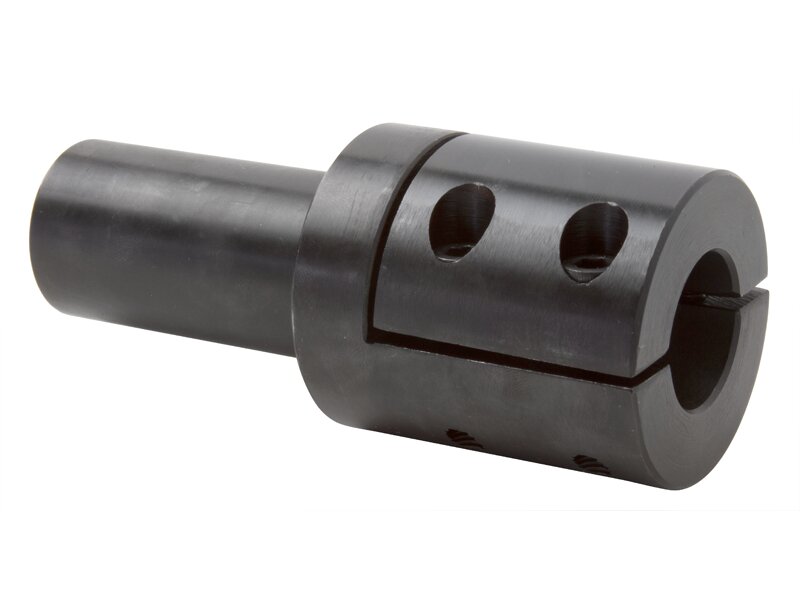
Buenas prácticas para trabajar con acero ASTM A108
Las técnicas de procesamiento de materiales afectan a la calidad del producto y a la eficacia de la producción. El éxito con el acero ASTM A108 requiere prestar atención a los métodos y parámetros adecuados. Seguir prácticas probadas reduce los residuos y mejora los resultados.
Técnicas de corte, mecanizado y conformado
El corte adecuado comienza con la selección de la velocidad y el avance. Las calidades medias de carbono se mecanizan mejor a velocidades entre 300 y 400 pies de superficie por minuto. Unas herramientas afiladas y un flujo adecuado de refrigerante evitan el endurecimiento de la pieza durante las operaciones de mecanizado.
Mantenemos profundidades de corte entre 0,010 y 0,020 pulgadas por pasada para obtener resultados óptimos durante las operaciones de torneado. Las herramientas de metal duro funcionan bien en la mayoría de las aplicaciones, mientras que las de acero rápido son adecuadas para cortes interrumpidos.
El conformado en frío requiere una cuidadosa atención al estado del material. El alivio de tensiones antes del conformado evita recuperación elástica problemas. Los pasos de conformado progresivo distribuyen la tensión uniformemente, reduciendo el riesgo de agrietamiento.
Soldadura y unión de componentes de acero ASTM A108
El éxito de la soldadura comienza con una preparación adecuada del material. Las superficies limpias y las temperaturas de precalentamiento adecuadas evitan los defectos de soldadura. Las calidades con bajo contenido en carbono se sueldan más fácilmente que las variantes con alto contenido en carbono.
El precalentamiento a 300-500°F reduce el riesgo de agrietamiento en las calidades medias y altas en carbono. Los electrodos de bajo hidrógeno minimizan el potencial de fisuración en frío. El enfriamiento lento tras la soldadura permite aliviar las tensiones sin comprometer las propiedades.
El tratamiento térmico posterior a la soldadura mejora la fiabilidad de la unión. El alivio de tensiones a 1100-1200°F reduce las tensiones residuales. Supervise las velocidades de enfriamiento para mantener las propiedades mecánicas deseadas.
Tratamiento térmico óptimo para máxima resistencia
El éxito del tratamiento térmico depende de un control preciso de la temperatura. Las temperaturas de austenitización adecuadas varían en función del contenido de carbono. La selección de los medios de enfriamiento afecta a las propiedades finales y al control de la distorsión.
Las calidades de carbono medio responden bien al temple en aceite. El temple en agua es adecuado para las variantes con menos carbono, pero aumenta el riesgo de distorsión. Las temperaturas de revenido entre 400 y 1200 °F equilibran los requisitos de resistencia y tenacidad.
Consideraciones clave al elegir acero ASTM A108
La selección del material influye directamente en la eficacia de la fabricación, el rendimiento del producto y los costes del proyecto. Analicemos los puntos críticos de decisión para determinar si el acero A108 cumple los requisitos específicos de la aplicación.
Factores que afectan a la selección de materiales
Requisitos de rendimiento:
- Condiciones de carga estática y dinámica (tracción, compresión, fatiga)
- Temperatura de funcionamiento (óptima de -20°F a 300°F)
- Exposición ambiental (humedad, productos químicos, rayos UV)
- Vida útil prevista (5-20 años normalmente)
Consideraciones de costos:
- Materia prima: $0,75-1,50/lb según el grado y la forma
- Gastos generales de procesamiento: Tiempo de mecanizado, desgaste de la herramienta, tasa de desechos
- Operaciones secundarias: Tratamiento térmico, chapado, revestimiento
- Repercusión del volumen de producción en el precio por pieza
Limitaciones de fabricación:
- Capacidades de la máquina herramienta (potencia, velocidades, avances)
- Herramientas y utillajes disponibles
- Requisitos de programación de la producción
- Métodos y equipos de control de calidad
Tolerancias y especificaciones
Capacidad de control dimensional:
- Tolerancia estándar: ±0,005 pulgadas (uso general)
- Tolerancia de precisión: ±0,001 pulgadas (ajustes críticos)
- Tolerancia del suelo: ±0,0002 pulgadas (componentes de precisión)
- Rectitud: 0,030 pulgadas por pie como máximo
Especificaciones del acabado superficial:
- Trefilado en frío: 32-63 micropulgadas Ra (uso general)
- Rectificado: 16-32 micropulgadas Ra (superficies de apoyo)
- Pulido: 8-16 micropulgadas Ra (ajustes deslizantes)
- La direccionalidad de la textura superficial es importante para la función
Requisitos de propiedades mecánicas:
- Resistencia a la tracción: 60.000-100.000 psi
- Límite elástico: 50.000-85.000 psi
- Dureza: 150-300 Brinell
- Elongación: 10-25% en 2 pulgadas
Acero ASTM A108 en aplicaciones personalizadas
Optimización del diseño:
- Transiciones de grosor de sección (relación mínima 2:1)
- Reducción de la concentración de tensiones (radio mínimo de 0,030 pulgadas)
- Compatibilidad de los métodos de montaje (soldadura, roscado, encaje a presión)
- Accesibilidad del tratamiento superficial (cobertura uniforme)
Protocolo de pruebas:
- Ensayos mecánicos (tracción, dureza, impacto)
- Verificación dimensional (MMC, inspección óptica)
- Evaluación de la calidad de la superficie (perfilómetro, visual)
- Validación del tratamiento térmico (metalografía, mapa de dureza)
Conclusión
El acero A108 sigue demostrando su valor en los escenarios de fabricación modernos. Su maquinabilidad, resistencia y rentabilidad lo convierten en una opción práctica para diversas aplicaciones industriales. El éxito del A108 exige prestar atención a la selección adecuada del material, los métodos de procesamiento y las medidas de control de calidad. El historial demostrado de este material en componentes de automoción, industriales y de precisión subraya su fiabilidad para futuros proyectos.
Preguntas frecuentes
¿Cuál es la diferencia entre el acero ASTM A108 y el ASTM A36?
Las normas ASTM A108 y A36 tienen fines distintos en la industria siderúrgica. La A108 se especializa en barras acabadas en frío destinadas al mecanizado, con una composición química controlada para un comportamiento de corte predecible. Por el contrario, el A36 se destina a aplicaciones estructurales, ofreciendo un menor contenido de carbono y diferentes características de resistencia.
¿Puede utilizarse la norma ASTM A108 en aplicaciones de alta temperatura?
El acero A108 muestra limitaciones en entornos de temperaturas elevadas. Por encima de los 600°F, sus propiedades mecánicas empiezan a degradarse significativamente. El material experimenta una reducción de la resistencia y posibles cambios microestructurales a temperaturas más elevadas.
¿Es resistente a la corrosión el acero ASTM A108?
El acero A108 ofrece una resistencia a la corrosión inherente mínima. Sin protección superficial, se oxidará cuando se exponga a la humedad y a las condiciones atmosféricas.
¿Cómo se puede mejorar la soldabilidad del acero ASTM A108?
Mejorar la soldabilidad del acero A108 requiere una preparación y un control del proceso específicos. El precalentamiento del material a 250-300 °F reduce la velocidad de enfriamiento y evita el endurecimiento en la zona afectada por el calor. El diseño adecuado de la unión favorece la fusión completa, incluidos los biseles y los espacios de raíz apropiados.
Hola, soy Kevin Lee

Durante los últimos 10 años, he estado inmerso en diversas formas de fabricación de chapa metálica, compartiendo aquí ideas interesantes de mis experiencias en diversos talleres.
Póngase en contacto

Kevin Lee
Tengo más de diez años de experiencia profesional en la fabricación de chapas metálicas, especializada en corte por láser, plegado, soldadura y técnicas de tratamiento de superficies. Como Director Técnico de Shengen, me comprometo a resolver complejos retos de fabricación y a impulsar la innovación y la calidad en cada proyecto.

